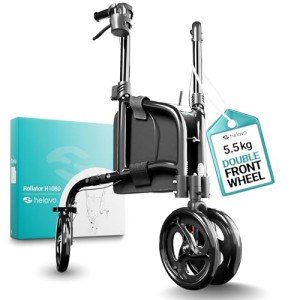- 작성자 Novella
- 댓글 0건
- 조회 344회
- 작성일 2025.07.05
본문
Understanding Medical Walkers: A Comprehensive Guide
Medical walkers act as important mobility aids for people recovering from surgical treatment, managing persistent illnesses, or handling age-related mobility problems. These gadgets not just improve physical self-reliance however also enhance safety, permitting users to navigate their environments with greater ease. This article explores the types, benefits, features, and considerations associated with medical walkers, in addition to some regularly asked questions.
Tabulation
- Types of Medical Walkers
- Benefits of Using a Medical Walker
- Secret Features to Consider
- Regularly Asked Questions
- Conclusion
1. Kinds Of Medical Walkers
Medical walkers are available in numerous designs, dealing with various requirements and choices. The primary types consist of:
| Type of Walker | Description |
|---|---|
| Standard Walker | A rectangular frame with 4 legs, using stability and assistance. |
| Two-Wheeled Walker | Comparable to a standard walker but equipped with wheels at the front for simpler movement. |
| Three-Wheeled Walker | A lightweight walker with three wheels, permitting more maneuverability, suitable for indoor use. |
| Rollator Walker | A walker with 4 wheels, hand brakes, and a seat, ideal for longer distances and resting needs. |
| Hemi Walker | Developed for people who can use just one hand, including a tripod-like style. |
2. Benefits of Using a Medical Walker
Using a medical walker provides numerous benefits that add to the user's general wellness, including:
- Increased Stability: Walkers offer a steady base of support, lowering the risk of falls.
- Improved Mobility: They allow users to move more easily, promoting self-reliance.
- Discomfort Relief: By redistributing weight, walkers can relieve pain in the joints, particularly in the hips and knees.
- Posture Support: These devices encourage appropriate posture, reducing pressure on the back.
- Improved Confidence: Users typically feel more safe and secure utilizing walkers, resulting in better self-esteem and increased activity levels.
3. Secret Features to Consider
When picking a medical walker, it's essential to examine various functions to discover the right fit. Here are some vital aspects to think about:
- Weight Capacity: Ensure the walker can support the user's weight while preserving stability.
- Height Adjustment: Look for a walker with adjustable height settings to accommodate the user's height and supply comfortable grip.
- Material: Lightweight aluminum walkers are much easier to steer, while steel walkers provide more powerful assistance however may be heavier.
- Wheel Quality: If choosing for a wheeled walker, think about the wheel size and tread. Bigger wheels navigate unequal surface areas more quickly.
- Seat Availability: If users will be walking for longer durations, a walker with an integrated seat can supply rest breaks when needed.
- Brakes: Hand brakes are particularly important for safety in rollator walkers to control speed and stop when required.
Kinds of Walkers with Features Comparison Table
| Walker Type | Weight Capacity | Height Adjustment | Wheels | Seat Available | Brakes |
|---|---|---|---|---|---|
| Standard Walker | Approximately 300 pounds | Yes | No | No | No |
| Two-Wheeled Walker | As much as 300 pounds | Yes | Yes | No | No |
| Three-Wheeled Walker | Approximately 250 lbs | Yes | Yes | No | No |
| Rollator Walker | Approximately 400 lbs | Yes | Yes | Yes | Yes |
| Hemi Walker | Up to 250 pounds | Yes | No | No | No |
4. Frequently Asked Questions
Q1: Who must use a medical walker?A: Medical walkers are advantageous for individuals recuperating from surgical treatment, experiencing balance problems, or requiring assistance due to age-related mobility difficulties. Q2: Can a medical walker be adjusted?A: Yes, most

medical walkers are height-adjustable to accommodate various user heights, allowing for a more comfy grip. Q3: How do I select the ideal walker for my needs?A: Consider factors such as the
user's weight, height, kind of mobility concerns, and whether they need a seat or brakes. Testing the walker for comfort and stability before purchase is also recommended. Q4: Are there any safety pointers connected with using a medical walker?A: Yes, users need to ensure they do not lean too
heavily on the walker, use it on steady and level surface areas, and always guarantee
the brakes are engaged when seated or fixed. Q5: Can walking with a medical walker aid with rehabilitation?A: Absolutely. Medical walkers are frequently suggested as part of rehab programs as they encourage
physical activity, which aids in healing and mobility enhancement. 5.
Conclusion Medical walkers play an essential function in boosting the quality of life for people dealing with mobility challenges. With numerous types and functions readily available, selecting the right walker involves thinking about the user's specific needs and situations. By comprehending their benefits and appropriate use, people can restore self-reliance, improve their mobility, and browse their environments safely. Whether for short-term healing or long-term assistance, the best medical walker can considerably enhance a user's total well-being. Integrating a medical walker into one's daily regimen can be a transformative decision, making it easier to take part in life's daily activities while ensuring safety and confidence.
댓글목록 0개
등록된 댓글이 없습니다.

